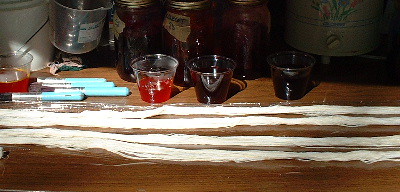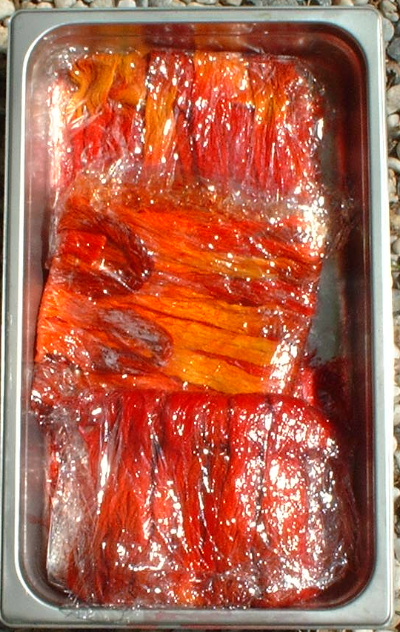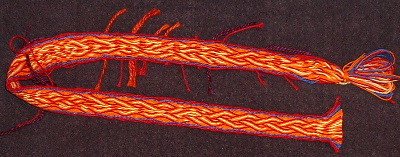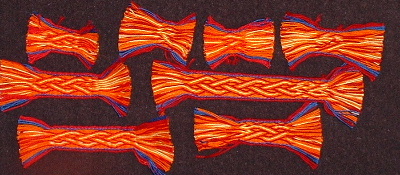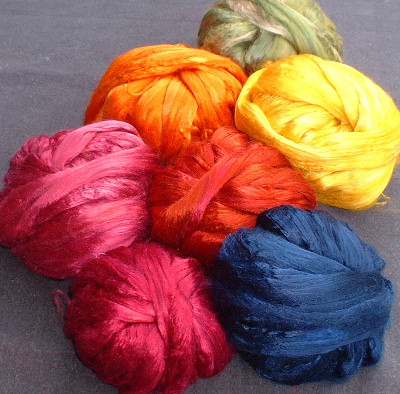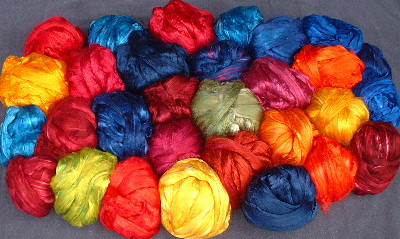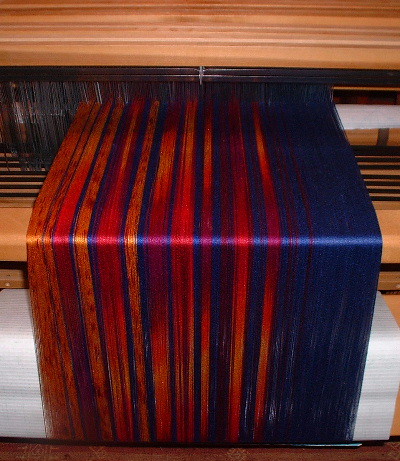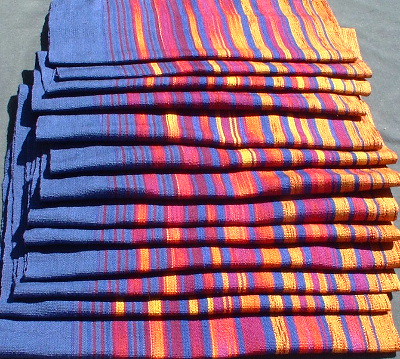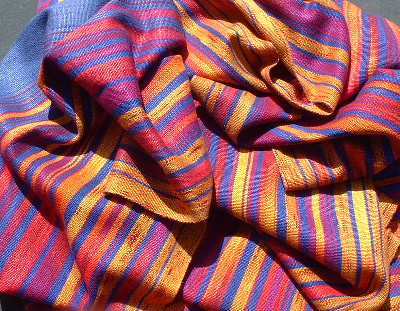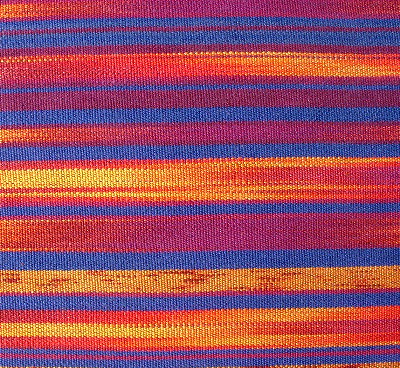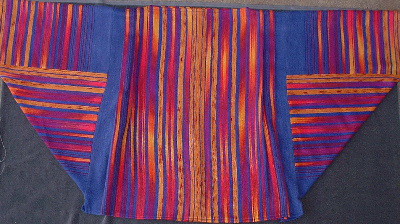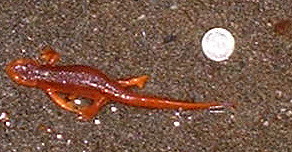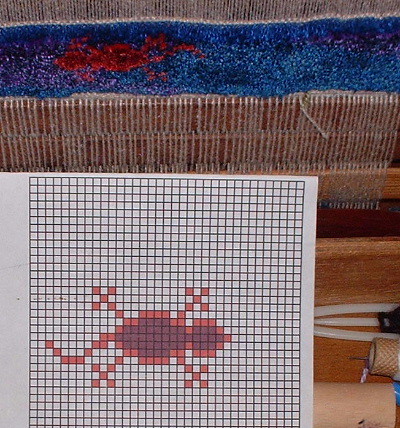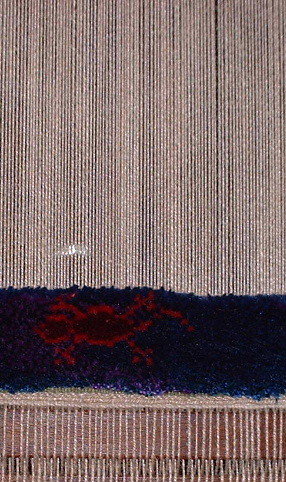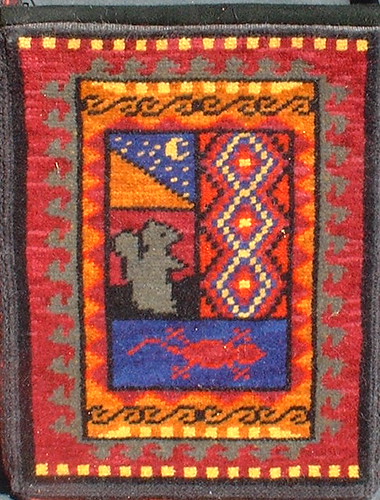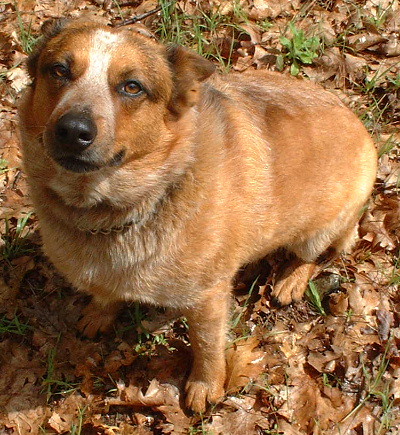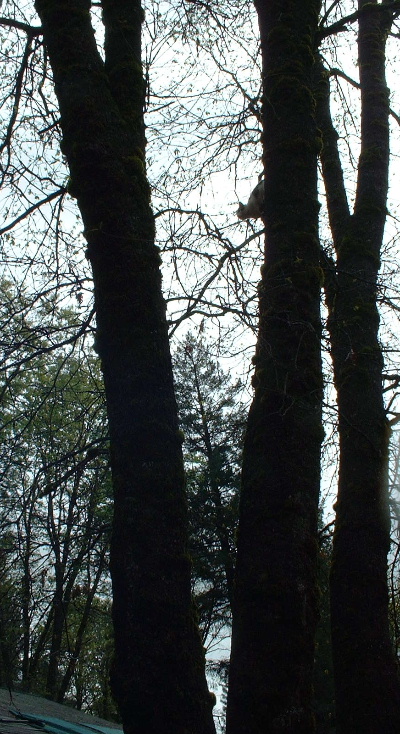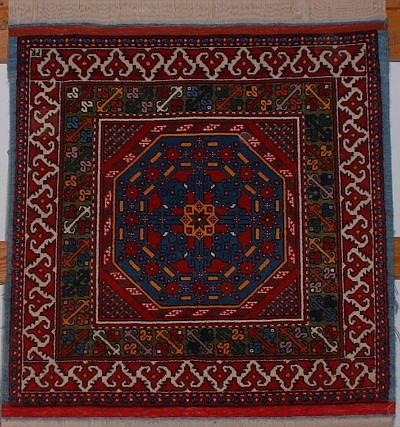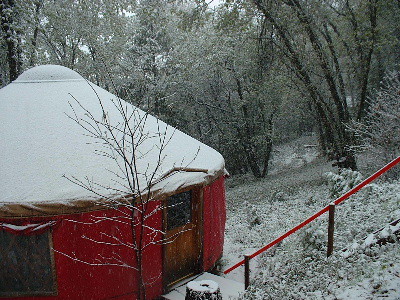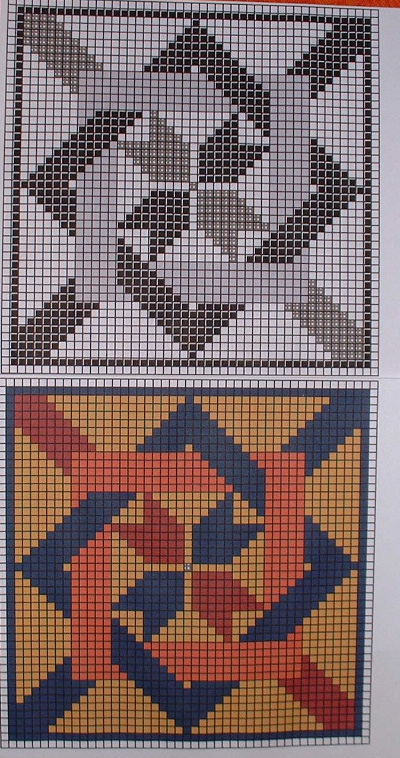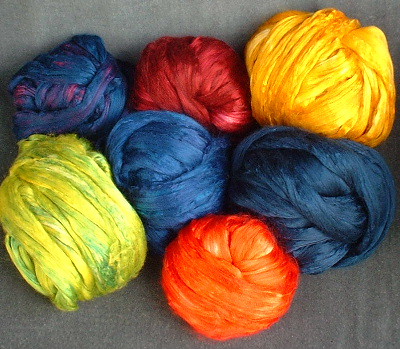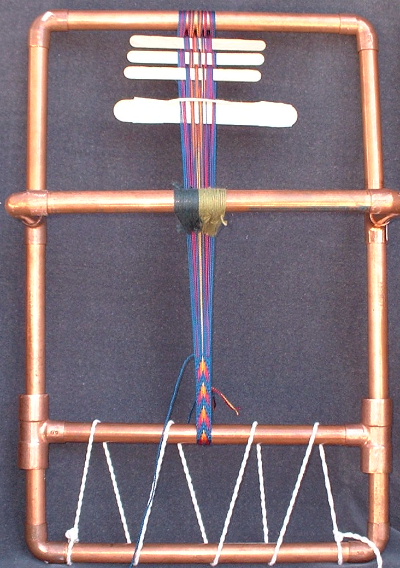Green Silk
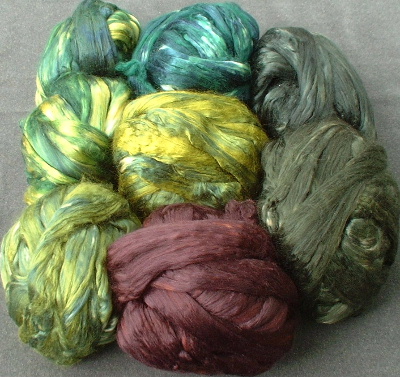
As you can see, I've been dyeing silk green (with a brief foray into purple, but more on that later).
The greens are varied: on the left and center are combinations of yellow and blue, in the back is a gold/turquoise blend, and on the right are navy/gold versions. I am not measuring, so I can't tell you percentages. I am going for variety, so I just use different components.
These are not blending in the pot well, and are variegated. They'll make fabulous greens spun up though, so I'm not concerned. I think the lack of blending is because I am being supremely lazy and not even making up dyestocks: I'm just tipping dye powder into the pot before adding the silk. I'm also not using all the auxiliary chemicals that I would use if I wanted level colors: no salt (a leveling agent) and no sodium acetate (a pH buffer). The colors will still be fast, just not level. Oh well!
How do I choose which colors to put together? It's daily serendipity: I know I need a variety of greens so I vary the mix. I have lots of sample books from which I can select colors, and (Warning!: small commercial plug ahead) Deb Menz and I did a sample book for sale a few years ago:
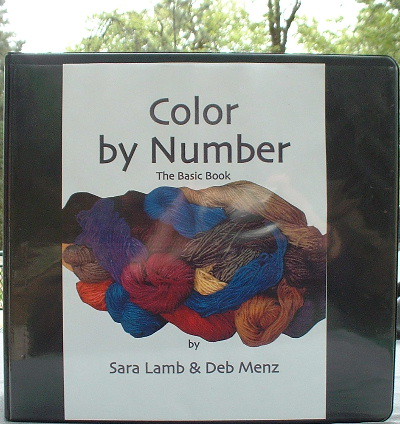
We made up 50 books for sale, and we're down to only a few left (www.debmenz.com if you are interested). We are starting the dyeing for the next volume, which we should have ready by June 2006. It will be more complex colors than the first volume (really *volumes*, the first ran to 1100 samples and took 2 binders to contain). I will be clogging the blog with dye sample pictures as I get them done!
So I can look at, say *green* pages and see how the different yellows and blues create a variety of greens:
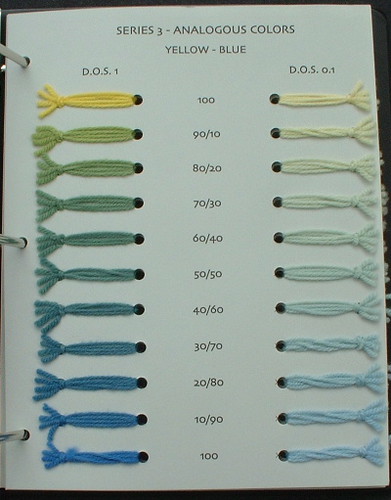
Here's the yellow/blue page. There are 3 blues (navy, turquoise and blue) and 2 yellows (yellow or gold) in the sample book, so the variety is quite extensive, without even taking into account the depth of shade (D.O.S.). My dump dyeing is emulating the 50/50 range of colors, but again, with no measuring so all the colors vary somewhat.
All those greens seemed to call out for a brown-purple, so yesterday (and today) I did a scarlet/navy purple:
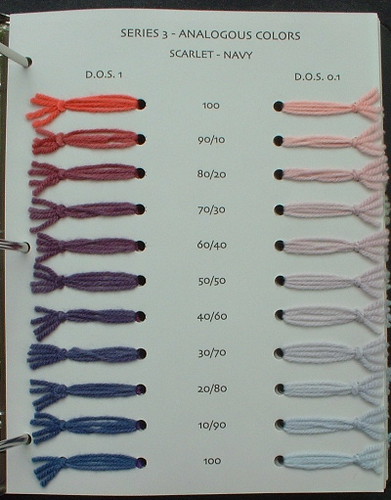
Scarlet is a yellow-red, so the components of this purple go nicely with the greens I'd been dyeing. I need several more batches of this squadgey purple, then I'll do some bright purps.
Dyeing, what fun!
A few quick answers to comments:
June: the brushes in the photo come from Maiwa Handprints in BC. But my favorite brushes are from the paint store, in the section for Faux Painting Supplies. They have black and gold handles, and are simply labeled The Decorator (tm), by Robert Simmons. They are pricey, but last forever. Many of my brushes are abused, overused, and lose bristles. When the whole brush part falls off, I just glue it back together. I don't worry about bristles falling out, they wash out.
Minnie (dragon knitter): yes, the pans are food service stainless steel steam trays. I bought them at a restaurant supply, for dyeing. I use them for oven dyeing (immersions), and to hold warps while they batch (as I did in the last post). They are just a convenient size/material.
